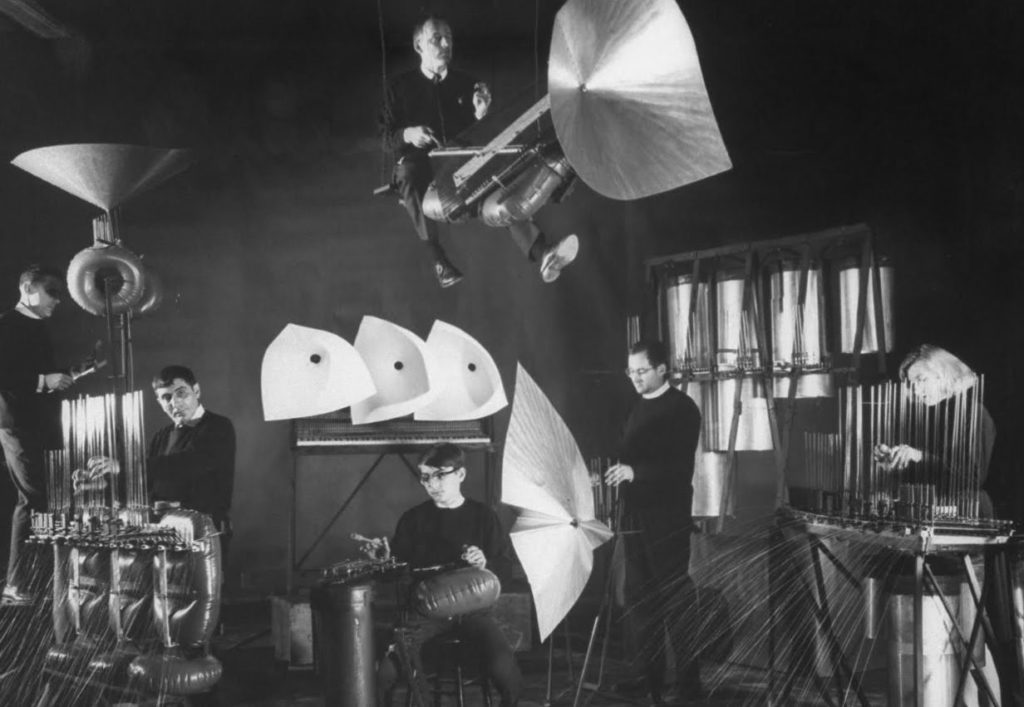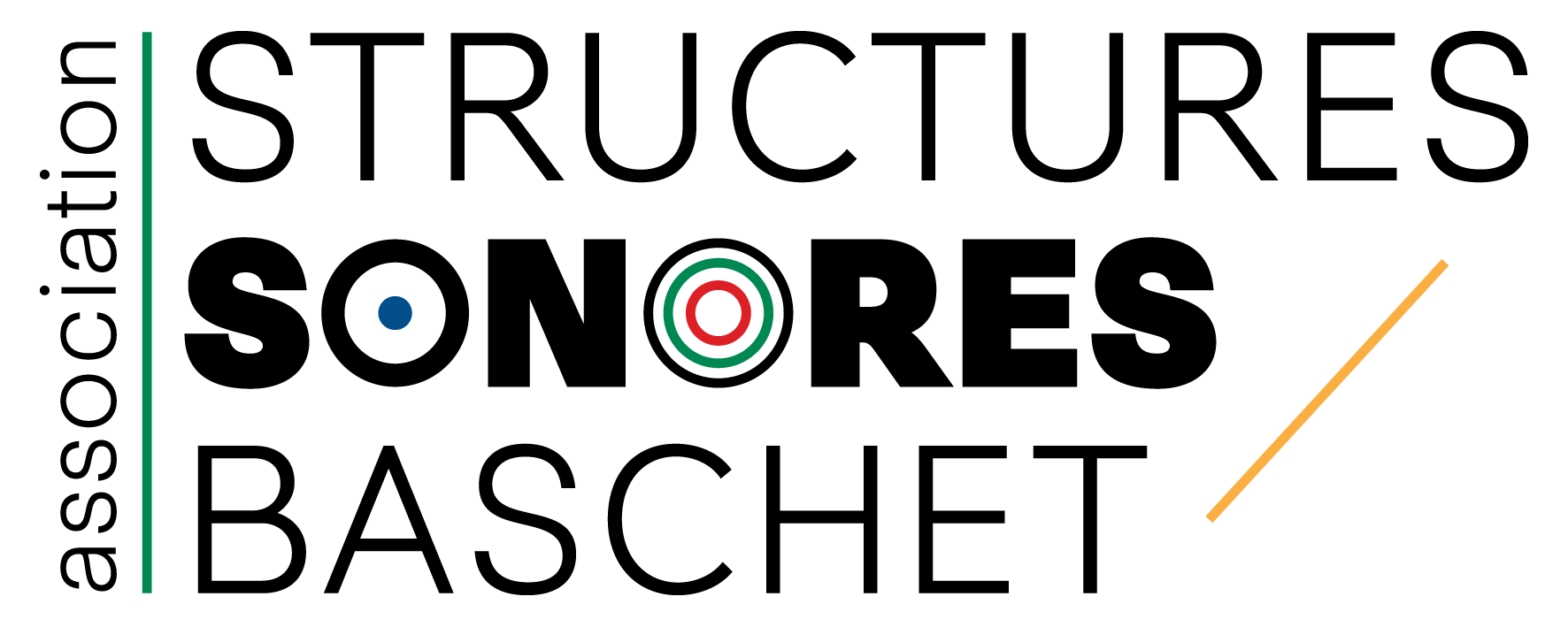The BASCHET STORY
 The Baschet brothers’ story began in the early 1950’s when Francois Baschet travelled around the world with his guitar. He found it too cumbersome so invented an inflatable guitar!
The Baschet brothers’ story began in the early 1950’s when Francois Baschet travelled around the world with his guitar. He found it too cumbersome so invented an inflatable guitar!
On his return to France, he and his brother Bernard, who was an engineer, set out to “sculpt” new sounds. They realised that they could not invent new sounds with classical instruments of the orchestra, which had been invented two centuries earlier. Instead, through a very scientific approach, they sought new forms and materials to make new sounds.
From the very beginning, the sound, the visual and the social aspect of their work were the crucial and intertwined elements.
Broadly, their work developed in four phases, always with these three elements in mind:
-
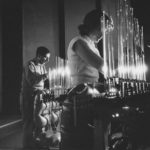 PHASE I: MUSIC & CONCERTS. Having set out on a mission to invent new sounds, they needed new musical techniques to accompany them. In 1954, they partnered with Jacques and Yvonne Lasry, a composer and an organ player, and continued to refine the instruments. The “Lasry-Baschet Sound Structures” group was born. From their first concert, in 1957 in the Maison des Centraux, Paris, they would invite the audience to play their new creations after the show. They toured France, Europe and the US playing concerts, including the Century 21 Expostion in Seattle in 1962 which gained them notoriety. Around this time, they appeared in several prestigious press outlets, including Life magazine, Le Figaro, the BBC, the New York Times, the New Scientist and the Ed Sullivan Show (three times !). In 1959, they were asked by Jean Cocteau to provide the music for his film, The Testament of Orpheus (1960) – the first of many soundtracks on which the unique Baschet sounds would feature.
PHASE I: MUSIC & CONCERTS. Having set out on a mission to invent new sounds, they needed new musical techniques to accompany them. In 1954, they partnered with Jacques and Yvonne Lasry, a composer and an organ player, and continued to refine the instruments. The “Lasry-Baschet Sound Structures” group was born. From their first concert, in 1957 in the Maison des Centraux, Paris, they would invite the audience to play their new creations after the show. They toured France, Europe and the US playing concerts, including the Century 21 Expostion in Seattle in 1962 which gained them notoriety. Around this time, they appeared in several prestigious press outlets, including Life magazine, Le Figaro, the BBC, the New York Times, the New Scientist and the Ed Sullivan Show (three times !). In 1959, they were asked by Jean Cocteau to provide the music for his film, The Testament of Orpheus (1960) – the first of many soundtracks on which the unique Baschet sounds would feature. -
PHASE II: EXHIBITIONS. In 1963, the Lasry family emigrated to
 Israel and the Baschet Brothers’ work entered a new sculputal phase. Their first major exhibition was in 1963 at the Museum of Decorative Arts, Paris, entitled ‘Object’. Always with the idea of public participation in mind, the exhibition’s warning labels read “Please touch!” 1965 saw their first major exhibition outside France, at the New York Museum of Modern Art, which purchased one of their pieces. For many years, they exhibited across the world, including in Belgium, Norway, Finland, Sweden, Mexico, Japan, Germany and Spain. In 1966, they again made a foray into film. The French satirical, art house film “In and Out of Fashion” (also known as “Are you Polly Maggoo?”) spoofing the fashion industry and its excesses featured metal dresses -worn with great difficulty – created by the Baschet sculptures. In 1970, they were invited by the organisers of the Universal Expo in Osaka Japan, to make 17 giant sound structures. The Baschet Sound Structures Association maintains links with the Baschet Japan Association which has collaborated in the restoration of these pieces and regularly performs musical creations.
Israel and the Baschet Brothers’ work entered a new sculputal phase. Their first major exhibition was in 1963 at the Museum of Decorative Arts, Paris, entitled ‘Object’. Always with the idea of public participation in mind, the exhibition’s warning labels read “Please touch!” 1965 saw their first major exhibition outside France, at the New York Museum of Modern Art, which purchased one of their pieces. For many years, they exhibited across the world, including in Belgium, Norway, Finland, Sweden, Mexico, Japan, Germany and Spain. In 1966, they again made a foray into film. The French satirical, art house film “In and Out of Fashion” (also known as “Are you Polly Maggoo?”) spoofing the fashion industry and its excesses featured metal dresses -worn with great difficulty – created by the Baschet sculptures. In 1970, they were invited by the organisers of the Universal Expo in Osaka Japan, to make 17 giant sound structures. The Baschet Sound Structures Association maintains links with the Baschet Japan Association which has collaborated in the restoration of these pieces and regularly performs musical creations. -
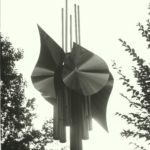 PHASE III: MONUMENTS. From 1968, the Baschet Brothers’ began to conceive of monuments, including clock towers, fountains and school bells – all with the same aim of making art accessible to all. The first one was a fountain at the World’s Fair in San Antonio, Texas which was operated by foot pedals. In the same year, they designed the school bell for the local primary school in Saint-Michel-sur-Orge, which the Association has recently restored. There are some 20 monuments, some in the Parisian region and others in Spain, Germany and the US. The Association is currently trying to trace and restore these sculptures.
PHASE III: MONUMENTS. From 1968, the Baschet Brothers’ began to conceive of monuments, including clock towers, fountains and school bells – all with the same aim of making art accessible to all. The first one was a fountain at the World’s Fair in San Antonio, Texas which was operated by foot pedals. In the same year, they designed the school bell for the local primary school in Saint-Michel-sur-Orge, which the Association has recently restored. There are some 20 monuments, some in the Parisian region and others in Spain, Germany and the US. The Association is currently trying to trace and restore these sculptures. -
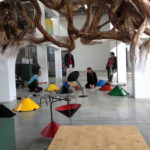 PHASE IV: INSTRUMENTARIUM. Towards the end of the 1970’s, the Baschet Brothers became interested in using their creations to expand sound education. They began to develop what would later become the Baschet Educational Instrumentarium – the full set of 14 instruments designed to be accessible to children, and ideal for a class of 28 pupils. The design process took several years, collaborating with several educators but a project with the Guggenheim Foundation, New York called “Learning to Read Through the Arts” accelerated the process, along with studies with local specialists who worked with autistic children. These educational activities remain at the heart of the Baschet Sound Strucutres mission.
PHASE IV: INSTRUMENTARIUM. Towards the end of the 1970’s, the Baschet Brothers became interested in using their creations to expand sound education. They began to develop what would later become the Baschet Educational Instrumentarium – the full set of 14 instruments designed to be accessible to children, and ideal for a class of 28 pupils. The design process took several years, collaborating with several educators but a project with the Guggenheim Foundation, New York called “Learning to Read Through the Arts” accelerated the process, along with studies with local specialists who worked with autistic children. These educational activities remain at the heart of the Baschet Sound Strucutres mission.
